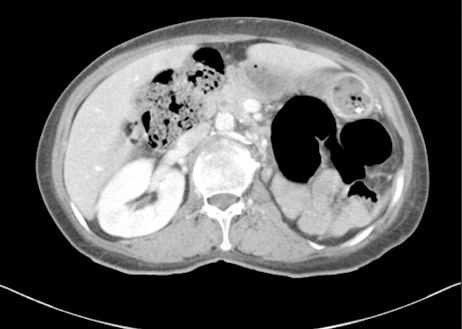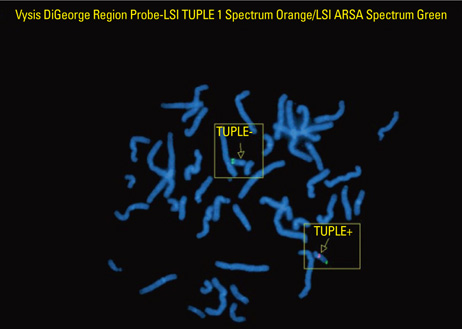J Bone Metab.
2013 May;20(1):57-60. 10.11005/jbm.2013.20.1.57.
A Case of CATCH22 Syndrome Diagnosed in Postmenopausal Woman
- Affiliations
-
- 1Department of Endocrinology and Metabolism, Ajou University School of Medicine, Suwon, Korea. yschung@ajou.ac.kr
- 2Department of Medical Genetics, Ajou University School of Medicine, Suwon, Korea.
- KMID: 2286315
- DOI: http://doi.org/10.11005/jbm.2013.20.1.57
Abstract
- CATCH 22 Syndrome is caused by chromosome 22q11.2 microdeletion, characterized by developmental abnormalities of the third and fourth pharyngeal pouches. It has a prevalence estimated at 1:3,000-1:9,000. Most deletions occurs sporadic, but autosomal dominant inheritance observed in 6-10% of cases. CATCH22 often diagnosed due to hypocalcemia during neonatal period or decreased immunity or facial defect, so it is very rare being diagnosed CATCH22 in adulthood. We report a 57 year old female who referred to mental change due to hypocalcemia and is diagnosed CATCH22. She was presented with hypoparathyroidism, single kidney due to renal agenesis, and mild facial defect. Our patient responded well to calcium and vitamin D treatment and she is on follow-up in outpatient clinic.
Keyword
MeSH Terms
Figure
Reference
-
1. Kobrynski LJ, Sullivan KE. Velocardiofacial syndrome, Di-George syndrome: the chromosome 22q11.2 deletion syndromes. Lancet. 2007. 370:1443–1452.
Article2. Driscoll DA, Salvin J, Sellinger B, et al. Prevalence of 22q11 microdeletions in DiGeorge and velocardiofacial syndromes: implications for genetic counselling and prenatal diagnosis. J Med Genet. 1993. 30:813–817.
Article3. Jung SM, Bae JH, Kim DH, et al. A case of DiGeorge syndrome associated with complex cardiovascular anomalies. Korean J Med. 1997. 53:714–719.4. Kim DJ, Hyun YY, Choi HM, et al. DiGeorge syndrome diagnosed by hypocalcemic tetany. Korean J Med. 2006. 70:S299–S301.5. Lee MJ, An SY, Bae CB, et al. A case of CATCH22 syndrome with normal parathyroid function. Endocrinol Metab. 2012. 27:151–154.
Article6. McDonald-McGinn DM, Kirschner R, Goldmuntz E, et al. The Philadelphia story: the 22q11.2 deletion: report on 250 patients. Genet Couns. 1999. 10:11–24.7. Ryan AK, Goodship JA, Wilson DI, et al. Spectrum of clinical features associated with interstitial chromosome 22q11 deletions: a European collaborative study. J Med Genet. 1997. 34:798–804.
Article8. Perez E, Sullivan KE. Chromosome 22q11.2 deletion syndrome (DiGeorge and velocardiofacial syndromes). Curr Opin Pediatr. 2002. 14:678–683.
Article9. Chinen J, Rosenblatt HM, Smith EO, et al. Long-term assessment of T-cell populations in DiGeorge syndrome. J Allergy Clin Immunol. 2003. 111:573–579.
Article
- Full Text Links
- Actions
-
Cited
- CITED
-
- Close
- Share
- Similar articles
-
- A Case of CATCH22 Syndrome with Normal Parathyroid Function
- A Case of CATCH22 Syndrome with First Attack of Hypocalcemic Seizure at 13 Years of Age
- Hematometra Due to Cervical Stenosis in a Postmenopausal Woman with Incidental Ovarian Steroid Cell Tumor: A Case Report
- A Case of Autoimmune Hepatitis in Postmenopausal Woman
- A case of postmenopausal frontal fibrosing alopecia



